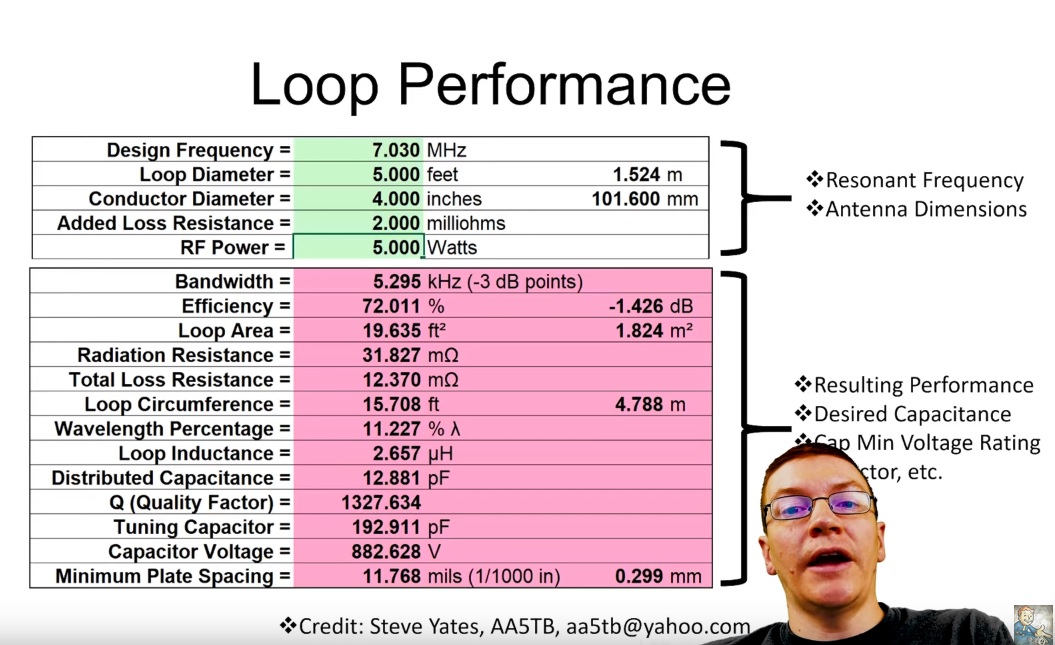
Video enviado por Isabel Martín … TNX
Daniel Tooker , explicanco en inglés la fabricación de una antena loop magnética que cubre de 80 a 20 metros
PARTE 1
PARTE 2
Explica la fabricación a partir del minuto 18
Esto es lo que detalle en la descripción del video:
3D Prints files can be found here (4″ Dia Rigid Duct Clamps & Couplers): https://www.thingiverse.com/thing:370…
The Objectives
• Need #1: Design a Magnetic Loop Antenna to operate in the 80m to 20m bands or wider.
• Need #2: Implement the Antenna with an overall budget of $100 or less (not including the transceiver).
• Need #3: Leave room in the design for improvements such as automated tuning or directional rotation.
The Solution
• Recommendation #1: Use semi-rigid aluminum ducting instead of copper.
• Recommendation #2: Use dimensioned lumber to support the structure of the antenna.
• Recommendation #3: Use a 3D printer to ensure piece parts fit together and provide durability. A loop antenna is defined by the ARRL Handbook as “a closed-circuit antenna that is, one in which a conductor is formed into one or more turns so its two ends are close together [1]”. In the case of this antenna, a tuned loop antenna is the same thing except a capacitor is designed and added to the loop across the antenna’s terminals.
The use of semi-rigid aluminum ducting will have a much lower price point than copper, especially when considering larger diameter such as 4 inches or greater. Additionally, the aluminum semi-rigid duct is lightweight. A larger diameter for the primary loop directly contributes to the antenna’s efficiency. Dimensioned lumber and 3D printed components are hard wearing enough to support the light-weight structure of the antenna.
The rationale for the selected materials is straight forward. But why choose a tuned magnetic loop antenna and not some other design? The tuned magnetic loop antenna used in amateur radio technology and other HF radio applications today have a few particular advantages. Because a tuned loop antenna puts high selectivity up at the “front” of a receiving system it can significantly help factors such as dynamic range with loaded Q values of 100 or higher easy to obtain assuming proper construction of the loop antenna [1]. Additionally, because of the versatility of the design which utilizes a variable capacitor, multiple ham radio bands may be effectively accessible through a single antenna without the overall design being too large or costly to construct.
• Result #1:
The semi-rigid duct (aluminum) was far less expensive than copper for an equivalent diameter.
• Result #2: The dimensioned frame and rotating mechanism were locally purchased, without requiring shipping.
• Result #3: The overall antenna cost excluding the vacuum variable capacitor, was under $70 USD.
• Result #4: The 4” semi-rigid duct allows for an increased efficiency of +40% compared to 0.5in copper.
• Result #5: The antenna is highly directional resulting in the ability to null out undesired interference.
• Result #6: The inclusion of a tuning capacitor allowed a variable resonant-frequency design.
Given the appropriate band selection and antenna tuning, voice, text, data and even images can be transmitted and received using this antenna. The only equipment required in between the radio (transceiver) itself and the antenna is coaxial cable. Since both a radio and coaxial cable was readily available in addition to the materials required to construct the antenna, this project was feasible to accomplish in 8 weeks’ time.
The antenna worked as designed and was able to operate at frequencies in the 80m to 20m wavelength bands.
There are many additional uses which the antenna can be applied to and the project here has only scratched the surface.
REFERENCES
[1] The ARRL Handbook, United States: The National Association for Amateur Radio, 2018
[5] “Loop Antenna Radiation,” Heyno Garbe, www.researchgate.net Accessed Mar. 3 2019
